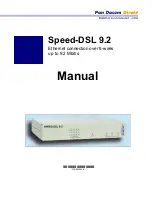
NAL Research Corporation (451-93156-009A)
16
2.
No unsolicited result codes are issued.
3.
RTS/CTS flow control, if enabled, is active. When RTS is OFF (high), the A3LA-RG suspends transfer
of data to the DTE; when CTS is OFF, the A3LA-RG expects the DTE to suspend transfer of data.
Transitions between the modes of operation are performed automatically by the A3LA-RG in response to
AT commands; the DTE has no other control over the mode.
11.0 AES-256 BIT ENCRYPTION
The A3LA-RG modem has a built-in AES-256 encryption software module. It can transmit either
encrypted or unencrypted data in all modes—dial up, direct Internet, RUDICS, SBD and SMS. The A3LA-RG
does not support encrypted voice calls. All voice calls are made in the ‘clear’ unless an external encryption
module is hooked to it such as the General Dynamics® Sectéra. When encryption is enabled and for non-
packetized data transmission modes including dial-up, direct Internet and RUDICS, the A3LA-RG sends data
in NAL Research’s proprietary format called packet send mode. Packet send mode is implemented to handle
AES-256 frame synchronization between the A3LA-RG and a connected device. The encryption and
decryption keys are matched in each frame to ensure NIST FIPS 140-2 compliance.
Instructions on how to use encryption can be found in manuals AT Command Reference in Appendix A.
List of AT commands used to set encryption include ^CCOP, ^KD, ^KE, ^KZ, ^STR, and ^UE. The
encryption algorithm implemented into the A3LA-RG complies with NIST FIPS 140-2 as defined in the
following documents:
1.
Security Requirements for Cryptographic Modules, FIPS PUB 140-2, US Department of
Commerce, National Institute of Standards and Technology, May 25
th
, 2001.
2.
Security Requirements for Cryptographic Modules, Annex A: Approved Security Functions
for FIPS PUB 140-2, US Department of Commerce, National Institute of Standards and
Technology, February 19
th
, 2003.
12.0 SELF-MONITORING TO PREVENT MODEM LOCK-UP
The 9523 RF board can sometimes ‘lock-up’ when being inactive over a long period of time (a day or
longer). The only way to recover is to power cycle the ISU. The A3LA-RG has safeguards put in place with a
watch-dog timer to keep the 9523 RF board from locking up. These were done by having another micro-
controller in-line with the serial communications, monitoring the communications and making sure the 9523
is responding correctly. Each of the safeguards is enabled by default. Below is a description of each of the
four safeguards. These safeguards are also employed on the A3LA-RM and A3LA-XM.
Check When Not in a Data Call: The micro-controller has a timer that is reset every time a character
arrives from the 9523 board. The timer is set to end every 2 minutes. When the timer expires the micro-
controller will check to make sure the 9523 is still responding by sending it an AT command. If the 9523
responds it starts the counter over again. If there is not response it power cycles the 9523. This can be
enabled or disabled with the ^MPTNC command.
Check When in a Data Call: The micro-controller has a timer that is reset every time a character arrives
from the 9523 board during data calls. The timer is set to end every 4 minutes during data calls. When the
timer expires the micro-controller will check to make sure the 9523 is still responding by sending it the +++
sequence. If the 9523 responds it returns to the data connection and starts the counter over again. If there
















































